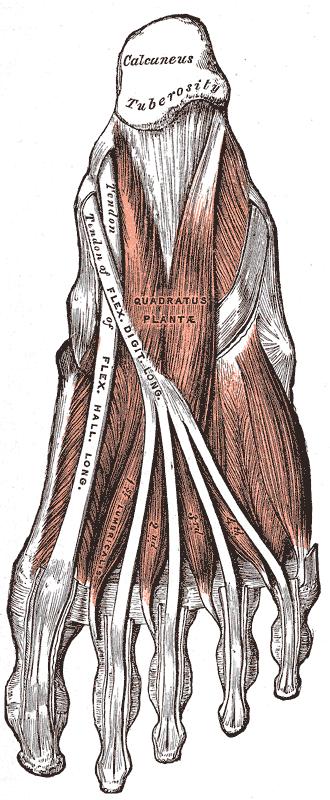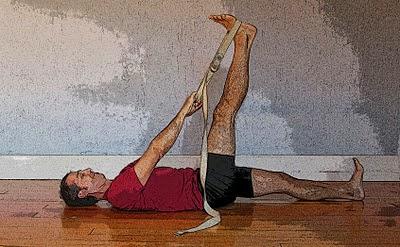 One of our readers sent in a question that I was surprised we had never received before:
One of our readers sent in a question that I was surprised we had never received before:“I'm having this ongoing cramping of the feet, mostly the arch during yoga classes. The cramping I experience happens is not flex, such as in seal or cobra or even in a kneeling pose where the top of my foot is on the mat. It's then I get the cramp in the upper arch of my foot. Each foot will cramp and sometimes both cramp at the same time. I've read about electrolyte balance and eating bananas and I have a pretty healthy diet and I practice yoga in a studio 5 days a week. I've been cramping almost from the beginning of doing yoga, about 2 years ago.”This is such a common experience for most yoga students, certainly when they first begin doing yoga asana, but even over time. I know that both Nina and I have experienced this first hand, so we are empathetic to our reader’s plight!That said, it might be nice to have a better understanding of what I jokingly refer to as “the deadly yoga foot cramp” (news flash: no one has actually died from these inopportune and usually harmless cramps that anyone at YFHA is aware of, but, boy do they hurt!).A foot cramp is a sudden and involuntary (you can say that again!) contraction of one or more of your muscles. In the case of the foot, it is most likely the smaller muscles that reside solely in the foot, called “intrinsic" muscles, but may also involve those that originate near the knee and end on one of the foot bones, called “extrinsic” muscles of the foot. Your average person may have experienced a sudden muscle cramp elsewhere in the body, quite commonly in the calf at night (Charlie horse), which can be very painful until the cramp subsides. If it weren’t for the pain and the muscle going offline temporarily, we wouldn’t likely even talk about muscle cramps. And, although when you are in the midst of a sudden foot cramp in class or at home, it seems like it may last forever, it usually resolves in seconds or minutes, especially if you come out of the pose you’re doing and do a little self-care to help things along.Even though in many cases the exact cause of muscle cramps is not known, there are certain causes for having them more often. The National Institutes of Health (NIH) website has a pretty exhaustive list of possible causes:
- Brain disorders, such Parkinson’s, MS, Huntington’s Disease, to name a few
- Chronic kidney disease and dialysis
- Damage to a single nerve or multiple nerves that are connected to muscles
- Dehydration (not having enough fluids in your body)*
- Disorders or injuries that involve peripheral nerves
- Heavy exercise*
- Hyperventilation, which is rapid or deep breathing (can occur with anxiety or panic)*
- Increased levels of phosphate in the body
- Overuse of muscles during sports or work activity*
- Pregnancy, more often during the third trimester*
- Reduced levels of magnesium or calcium in the body*
- Thyroid disorders
- Too little vitamin D
- Certain medications*
- Cause severe discomfort
- Are associated with leg swelling, redness or skin changes
- Are associated with muscle weakness
- Happen frequently
- Don't improve with self-care
- Aren't associated with an obvious cause, such as strenuous exercise
- older age, when sarcopenia or muscle mass loss has set in and the remaining muscle may be more easily overstressed
- dehydration, which is both a cause and a risk factor, especially in athletes who become fatigued and dehydrated while participating in warm-weather sports
- pregnancy, when muscle cramps are more common
- medical conditions, such as diabetes, or nerve, liver or thyroid disorders
- Massage the foot by hand for a minute or so before activity.
- Sitting or standing, roll a tennis ball systematically between the sole of your foot and the floor to massage and release tension in the muscles of the foot.
- From a kneeling position, turn your toes under and sit back on your heels with your hands on the floor in front of your knees or on your thighs to stretch the soles of the feet, possibly even the plantar fascia as well.
- In Reclined Leg Stretch pose on your back, put the strap on the arch of the foot and rock it side to side to massage the muscles on the sole of the foot.

- Stand facing a wall and step one leg back into Warrior 1 position, bending the front knee toward wall and getting a good calf stretch for the back leg.
- When doing standing poses, imagine the toes relaxing and releasing away from the balls of the feet, instead of clawing the floor.
- And for our reader who is experiencing cramps in a more unusual location of his foot, poses that stretch the tops of the feet, such as, Hero pose (Virasana) and Thunderbolt pose (Vajrasana), or if it’s comfortable for you, Reclined Hero pose (Supta Virasana) might be helpful.


